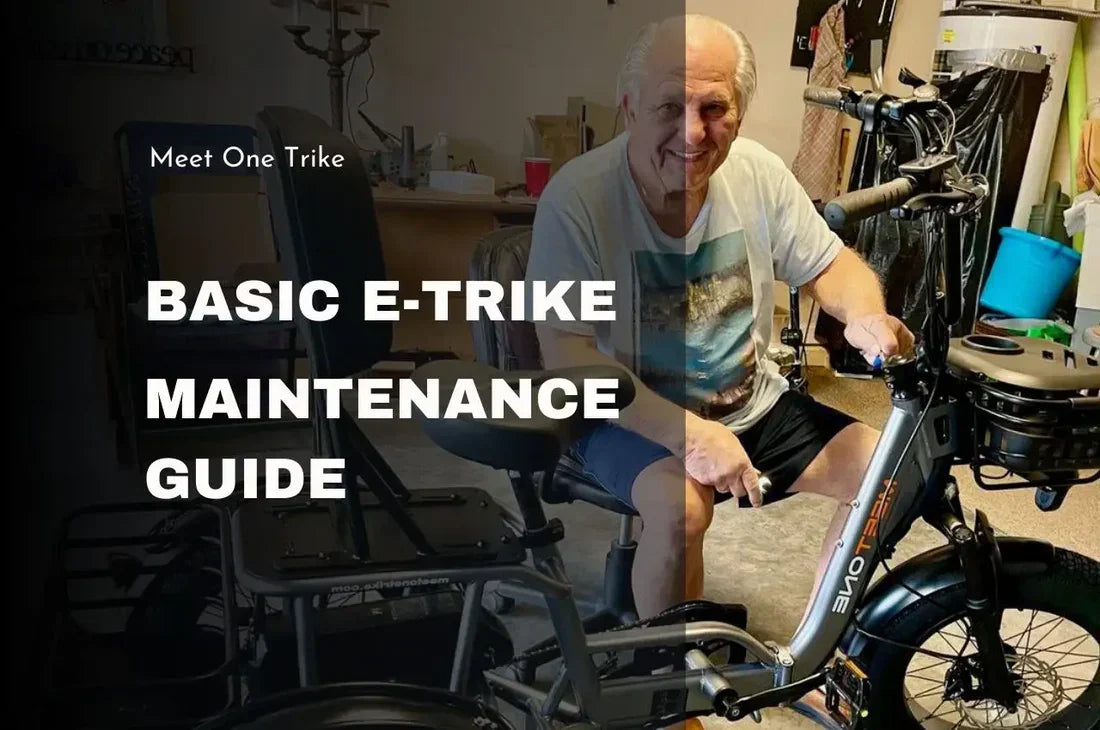
Basic E-Trike Maintenance Guide
Want your e-trike to last longer? You don’t need to be a professional technician or spend loads of time and money. E-trikes are built to be durable, and with just a bit of care, they can serve you for many years. Of course, very cheap models might suffer damage more easily, but most well-made e-trikes can remain in great condition with regular, basic maintenance.
Simple and Easy to Understand, Quick Start!
Doing basic maintenance yourself can save you time and money. Some enthusiasts find it enjoyable, but even if you don’t, taking just a little time each month makes a big difference. Remember, neglecting maintenance speeds up wear and could lead to expensive repairs down the line. Regular checks can help you avoid those problems entirely.
Good e-trikes are designed for durability. Everyday care mainly focuses on a few key areas: fasteners, brake system, drivetrain, and battery—along with a few small extras.
Proper Storage—Half the Battle!
Before any routine checks, make sure your e-trike is stored in a dry environment. While rain won’t ruin it instantly, moisture over time accelerates component ageing. Ideally, keep it in a garage, shed, or indoors. If you must store it outside, always use a waterproof cover. After riding in the rain, shake off excess water and wipe it down with a dry cloth.
Daily Maintenance Tips!
Following these regular checks will not only extend the lifespan of your trike but also ensure a smoother, safer ride.
1. Check Fasteners
Once a month, use the appropriate spanners or Allen keys to inspect all bolts and nuts—especially in these key areas:
✅ Wheel Axles: Ensure nuts are tight to prevent any wobbling or wheel detachment.
✅ Handlebar Screws: Loose handlebars can affect steering control—keep them secure.
✅ Frame Joints: Listen for creaks or clicking, and tighten if needed.
If you find a loose bolt, inspect it for rust or thread damage. If badly worn, you may need to replace the bolt or the component it holds.
2. Brake System Check & Pad Replacement
Brake pads wear down with use. If pad thickness falls below 2mm, replace them promptly to avoid loss of stopping power.
✅ How to Check Brake Pads:
- Locate the brake callipers (usually the black or metallic clamps near the wheels).
- Inspect pad thickness. If below 2mm or braking feels weak, it’s time for replacement.
- Gently spin the wheel while applying the brake—if you hear a metal-on-metal sound, change pads immediately.
3. Drivetrain Maintenance (Chain Cleaning & Lubrication)
Keeping your chain clean will reduce wear and improve efficiency.
✅ Cleaning Steps:
Dry wipe (good for weekly cleaning):
Use a clean, dry cloth to wipe off surface dirt and oil.
Deep clean (every few months):
- Use a bike-specific degreaser or soapy water with a soft brush to clean grime from the chain.
- Avoid spraying water directly onto sensitive areas like the bottom bracket or hub bearings.
After drying, follow with lubrication:
✅ Lubrication Steps:
- Apply a drop of chain lubricant to each link (use a bicycle-specific product).
- Wipe away any excess with a clean cloth to avoid attracting dust and debris.
Note: Avoid using WD-40—it can dry out the chain and shorten its life.
4. Battery Care & Storage
The battery is the “heart” of your trike—take care of it, and it will last longer.
✅ Charging Guidelines:
- Avoid overcharging or deep draining — Keep the battery between 20%–80% where possible.
- Charge at the right temperature — Ideally between 10°C–30°C. Avoid charging in freezing or very hot conditions.
- Monthly charging — If storing long-term, recharge it once a month to avoid deep discharge damage.
✅ Storage Tips:
- For long-term storage, keep the battery at around 40%–60% charge.
- Store in a dry, climate-controlled space. Avoid temperatures above 40°C or below 0°C.
- Keep out of direct sunlight to prevent overheating or battery swelling.
5. Listen for Unusual Noises & Troubleshoot Promptly
Strange sounds are early warning signs. Here’s what they might mean:
| Noise Type | Possible Cause | Solution |
|---|---|---|
| Squeaking | Dry chain or bearings | Lubricate moving parts and check for dryness |
| Clicking | Loose spokes or worn brake pads | Tighten spokes, replace pads if needed |
| Clanking | Loose crankset, pedals, or bolts | Inspect and tighten all fasteners |
Don’t ignore these noises—inspect and address them before they cause bigger problems.
6. Cleaning & Waxing
✅ Cleaning Tips:
- Use a damp cloth to wipe down the frame, tyres, and mudguards.
- Never use a pressure washer! Water can damage the motor and bearings.
✅ Optional Waxing:
- Use bicycle-safe wax to protect the frame and reduce dirt build-up.
- Avoid car wax—it may be too harsh for bicycle paint and coatings.
You Can Definitely Do This!
Maintaining your e-trike isn’t hard—all you need are a few simple tools and a bit of time. Regular care will keep your trike running smoothly for years to come, helping you stay active and mobile with peace of mind. Enjoy every ride!




















